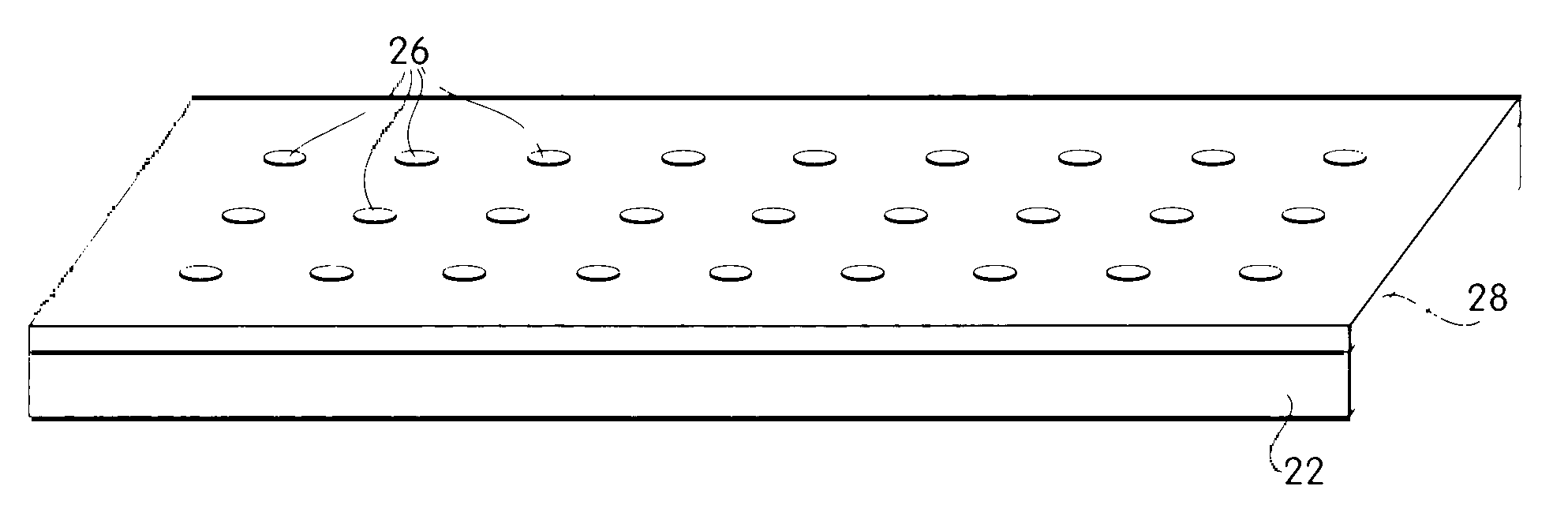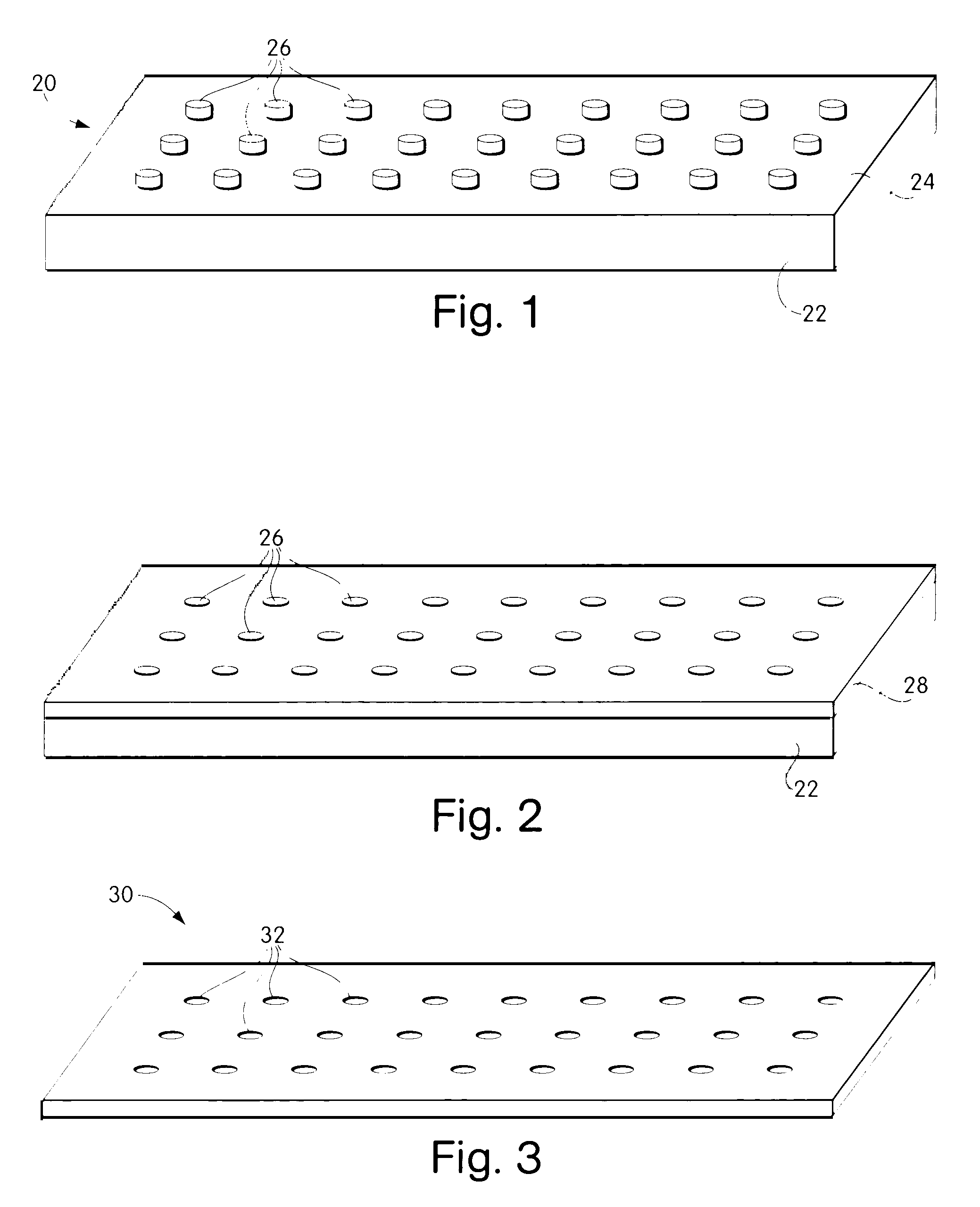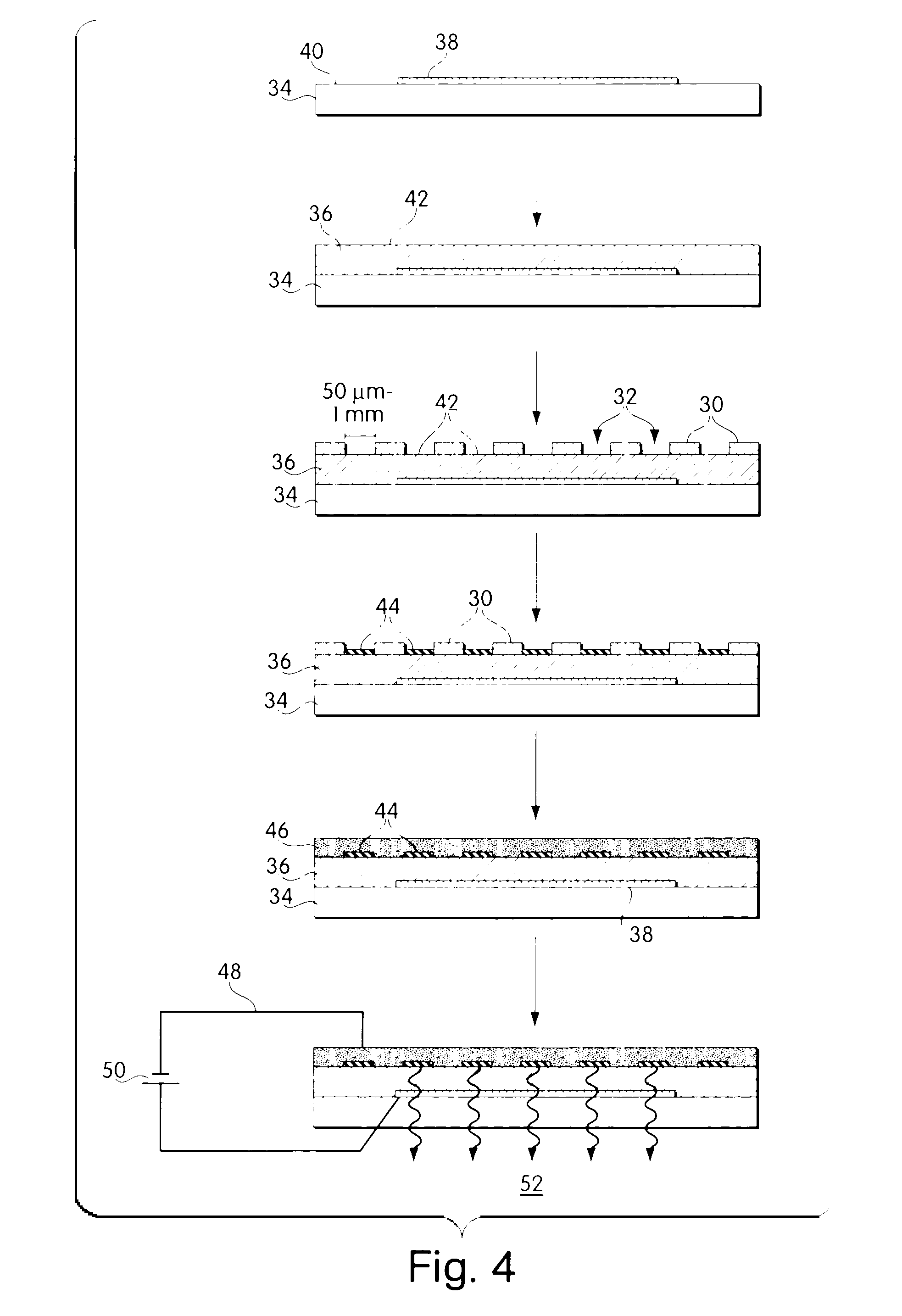Elastomeric mask and use in fabrication of devices
a technology of elastomeric masks and devices, applied in the field of surface modification, can solve the problems of requiring relatively sophisticated and expensive apparatus, requiring excessive number of steps or potentially destructive chemical techniques, and requiring relatively complex apparatus, etc., and achieves the effect of not being well-suited to creating multi-colored displays
- Summary
- Abstract
- Description
- Claims
- Application Information
AI Technical Summary
Benefits of technology
Problems solved by technology
Method used
Image
Examples
example 1
Fabrication of a Mask
[0089]A polydimethylsiloxane (PDMS) mask was fabricated.
[0090]A master (FIG. 1) including an array of photoresist posts on a silicon wafer was created by photolithography. The master consisted of an array of features in photoresist created on a silicon wafer. It was generated either by “rapid prototyping” (for feature sizes>50 μm)—by using a high-resolution transparency as the photomask for photolithography—or by performing standard photolithography with a chrome mask (for feature sizes50 μm). In standard photolithography techniques, SU-8 50 (SU-8 5) resist (as received from Microlithography Chemical Corp., Newton, Mass.) was used. Spin-coating the resist at 5000 rpm for 40 s (2500 rpm for 40 s) produced a film approximately 50 μm thick. After baking the resist at 105° C. for 15 min. (5 min), it was exposed to UV light for 1 min (10 s) through a mask using a Karl Suss mask aligner. Features were developed in propylene glycol methyl ether acetate (PGMEA) fr ˜5 mi...
example 2
A “Dry” Lift-Off Method: (A) Deposition of Agent Through Channels of Mask Followed by Removal of the Mask
[0097]An agent was applied through the channels of the mask of Example 1 so as to form a patterned structure adhered to a substrate. A surface of the mask of Example 1 was sealed against a silicon substrate surface. The masked surface was exposed to conditions of gold e-beam deposition, resulting in deposition of gold on surfaces of the silicon substrate in register with channels of the mask. Specifically, deposition of a thin layer of titanium (5 nm. ˜0.1 nm s) followed by a layer of gold (50 nm. ˜0.3 nm s) by electron-beam evaporation (based pressure ˜5×10−7 Torr) onto the masked substrate resulted in metal on both the substrate and the mask. Instead of processing with solvents to remove the “mask” of photoresist as in conventional lift-off, a “dry” lift-off technique of the invention was carried out by simply peeling the mask from the surface and allowing the gold to remain ad...
example 3
A “Dry” Lift-Off Method: (B) Etching Through an Elastomeric Mask Followed by Removal of the Mask
[0098]As in Example 2, an agent was delivered through a mask: in this example the agent was an etchant. A PDMS mask containing circular channels of 3 microns in diameter, separated by 7 microns, was brought into conformal, sealing contact with a silicon substrate. The masked surface was then exposed to Reactive Ion Etching (RIE), i.e., SF6 gas in a plasma discharge for 8 min. The mask was then removed from the surface to reveal “wells” etched into the silicon that were in register with the channels in the PDMS mask. Patterning by RIE usually requires photolithography to create a mask followed by a wet lift-off: these two steps are bypassed by using an elastomeric mask. FIG. 10 is an SEM image of the 3 micron diameter wells in silicon. Such structures could be used as nanovials for chemical analysis of very small volumes of samples.
PUM
| Property | Measurement | Unit |
|---|---|---|
| thickness | aaaaa | aaaaa |
| thickness | aaaaa | aaaaa |
| thickness | aaaaa | aaaaa |
Abstract
Description
Claims
Application Information
 Login to View More
Login to View More - R&D
- Intellectual Property
- Life Sciences
- Materials
- Tech Scout
- Unparalleled Data Quality
- Higher Quality Content
- 60% Fewer Hallucinations
Browse by: Latest US Patents, China's latest patents, Technical Efficacy Thesaurus, Application Domain, Technology Topic, Popular Technical Reports.
© 2025 PatSnap. All rights reserved.Legal|Privacy policy|Modern Slavery Act Transparency Statement|Sitemap|About US| Contact US: help@patsnap.com



